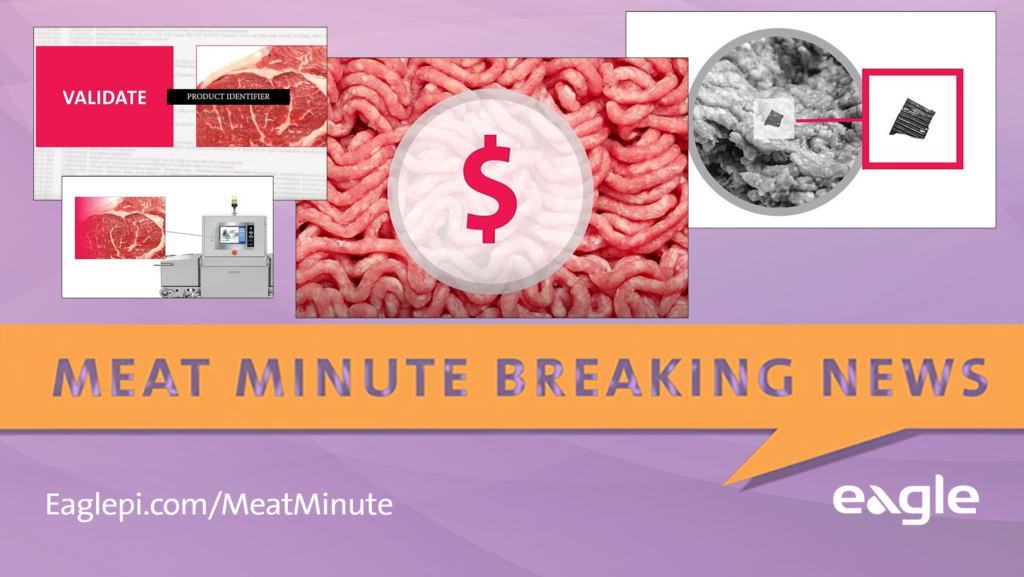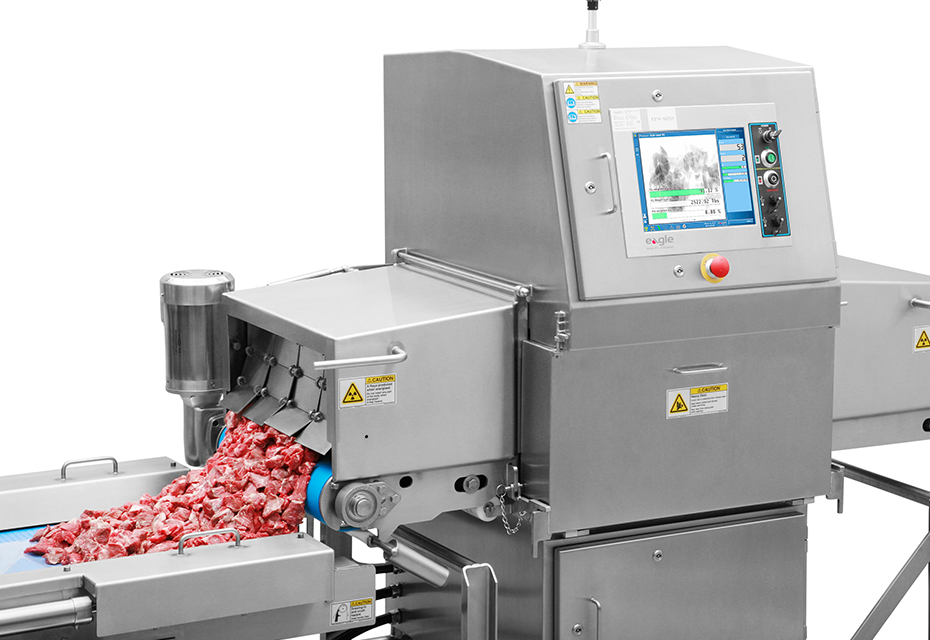In order to continue to supply major retailers and lucrative international markets, meat manufacturers and packers must make sure their products meet compliance standards with both retailer guidelines and national regulations.
But meeting retailer and government requirements is harder than it seems. The organic origins of meat mean that it is extremely variable in size, shape, fat and lean content, texture, and freshness, making it challenging for manufacturers to achieve consistent quality across all of their products. In addition, increasing global competition is putting pressure on manufacturers to boost the quality of their products and maximize food safety, while the rising cost of raw materials is driving them to reduce manufacturing costs to protect profit margins. How can manufacturers address these pressures?

With competition between different retail stores and on the supermarket shelf increasing, it is paramount that food products are safe, of consistent good quality and offer good taste, well-graded portions and excellent value for the money. If the products don’t address these demands, manufacturers risk having supplier agreements renegotiated and even evoked. In worst cases, such as in the event of a product recall, they can permanently harm the retailer’s relationship with the consumer.
But meeting retailer and government requirements is harder than it seems. The organic origins of meat mean that it is extremely variable in size, shape, What do retailers demand from manufacturers?
Protecting Profit Margins
To gain and retain access to contracts in lucrative markets, meat manufacturers need to ensure that their products comply with retailer demands for consistent quality at the correct price point. This means ensuring that products are safe for human consumption, with no foreign body contamination.
It is also essential that meat manufacturers protect their profit margins from the threats of increasing global competition, rising labor costs and the volatility of raw meat costs.
To address this, more and more meat manufacturers are looking for solutions to maximize production line efficiency by reducing product waste and maximizing manufacturing speeds. Fortunately, there are many technologies available now that can help meat manufacturers uphold product quality and safety to meet retailer and regulatory requirements, while at the same helping them to improve efficiency and productivity.
Foreign Body Contamination
One of the main hazards that can occur in meat during production is contamination from foreign bodies. Meat is particularly vulnerable to contamination from wire or stones that have been accidentally ingested by the animal, broken needles from veterinary treatment, or bone fragments from the carcass. During production, other sources of physical contamination may also affect the product, including metal shards and rubber from damaged processing machinery, or even glass or plastics from packaging.
With all of this in mind, it is important for manufacturers to have appropriate and effective product inspection solutions in place to minimize the risk of physical contamination reaching end consumers. X-ray inspection technology, for example, is capable of detecting a range of foreign bodies, from glass, metal, rubber, plastics, stones and calcified bone, enabling manufacturers to inspect for multiple forms of contamination simultaneously. Advanced x-ray systems are now able to identify even minuscule foreign body fragments in products and packaging of a similar density to the contaminant at high throughput speeds, maximizing detection rates for manufacturers while supporting efficiency. All of this can help meet compliance requirements, at high throughput rates, without sacrificing productivity.
Inspecting Meat for Accurate Fat Measurement
In addition to safeguarding against foreign body contamination, meat manufacturers must also integrate methods into their production lines to accurately measure the fat content of their products. This is not just about ensuring compliance with content declaration legislation or addressing retailer demands for healthier food, but also to make sure they minimize product waste. Fat is valuable to manufacturers as it helps to ensure the meat offers good taste for end consumers, so giving too much away can be costly, affecting efficiency. Accurately monitoring fat content in meat products can help maintain a good balance between fat and chemical lean (CL), minimizing fat giveaway to protect profit margins as well as reducing the risk of damaging fat claims.
There are high-performance in-line technologies available now that fully automate the fat measurement process, allowing meat manufacturers to inspect all of the products to ensure a consistent balance between fat and CL without compromising productivity. Advanced fat measurement solutions offer high-speed, high-precision measurement as products pass along the conveyor, enabling manufacturers to keep a close eye on the nutritional values of their food to meet regulatory requirements and retailers’ needs without wasting valuable fat. Any adverse trends in content can then be used by line operatives to adjust processing systems upstream to minimize the risk of non-conforming products in future.

Advanced x-ray inspection technologies are now capable of high-performance fat measurement, in combination with foreign body inspection and weight measurement. This multi-functionality can maximize throughput rate to optimize productivity for efficiency-conscious manufacturers, while the high-precision weight measurement can help them improve grading accuracy for meat products to help them up-hold consistent quality. All of this can enable them to meet retailer needs and regulatory requirements, while at the same time enhancing efficiency and protecting their profit margins.
The Road Ahead for Meat Manufacturers
Retailer and economic pressures on meat manufacturers will continue to grow as retailers face up to increasing competition and fight to retain the shopper. Meat manufacturers, in turn, must address the challenges presented by a more globalized market and look to the efficiency of their entire production process to remain ahead of their rivals.
By optimizing both foreign body detection and fat measurement on production lines, meat manufacturers can protect their bottom line costs – by increasing production line efficiency and reducing product giveaway – and grow their top line – through compliance with food safety regulations and guidelines, and ensuring that only high quality products reach the supermarket shelf or restaurant.
Contact an Eagle expert to discuss fat analysis technology and the benefits it could provide to your line.

.svg)

